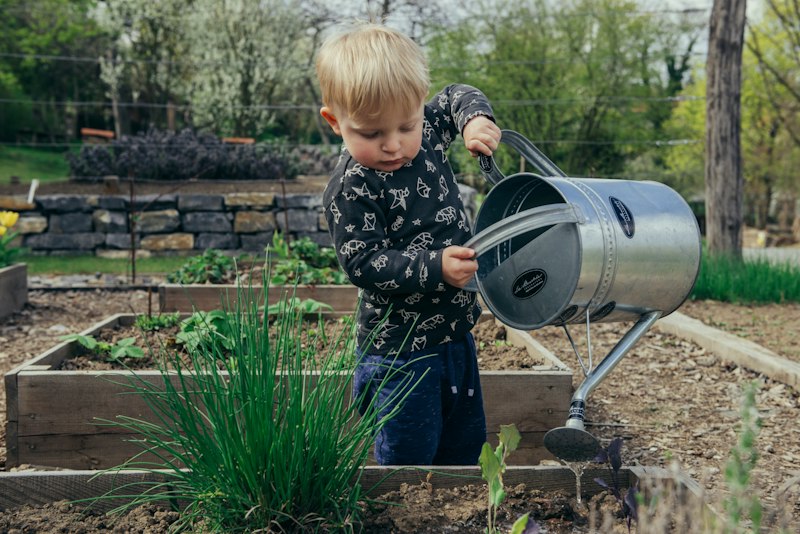Table of Contents
Are you struggling with a clogged garbage disposal? Frustrating, isn’t it? Before you reach for that bottle of Drano, let’s explore whether it’s safe to use in your garbage disposal. Drano is a popular drain cleaner known for its powerful unclogging abilities, but when it comes to garbage disposals, things get a bit tricky.
Garbage disposals are designed to shred food waste into small particles that can easily flow through the plumbing. Drano, on the other hand, contains strong chemicals like sodium hydroxide or lye, which work by dissolving organic matter. While these chemicals can be effective in clearing clogs in regular drains, they can pose risks when used in a garbage disposal.
The main concern lies in the metal components of your garbage disposal. Drano’s corrosive nature can potentially damage these parts, leading to leaks and even rendering your disposal useless. Additionally, the chemicals in Drano may not break down food waste as effectively as the grinding action of the disposal, resulting in further clogs down the line.
So, what should you do if your garbage disposal is clogged? Instead of reaching for Drano, consider some alternative methods. Start by turning off the power to the disposal and using a pair of tongs or pliers to remove any visible debris causing the clog. You can also try using a plunger specifically designed for garbage disposals. Plunging can help dislodge the blockage without the need for harsh chemicals.
Prevention is always better than cure, so it’s essential to take proper care of your garbage disposal. Avoid putting large amounts of food waste or hard items like bones down the disposal. Run cold water while using the disposal to help flush away debris, and occasionally grind ice cubes to keep the blades sharp.
Exploring the Safety Quandary: Can Drano be Your Garbage Disposal’s Best Friend or Worst Enemy?
Introduction:
Have you ever found yourself standing in front of your clogged garbage disposal, desperately searching for a solution? Many homeowners turn to Drano, a popular drain cleaner, hoping it can work
The Power of Drano:
Drano is known for its powerful formula designed to dissolve stubborn clogs caused by grease, food particles, and other debris. It’s often seen as a quick and convenient solution for a clogged garbage disposal. The active ingredients in Drano, typically sodium hydroxide or potassium hydroxide, work by breaking down organic material and clearing the blockage.
The Enemy Within:
While Drano can be effective at unclogging drains, it’s essential to exercise caution when using it in your garbage disposal. The high alkaline content in Drano can cause damage to certain materials commonly found in garbage disposals, such as rubber seals and plastic components. Prolonged exposure to Drano may lead to corrosion, leaks, or even complete failure of your disposal unit.
Safer Alternatives:
If you’re concerned about the potential risks associated with using Drano in your garbage disposal, there are safer alternatives worth considering. One option is a natural mixture of baking soda and vinegar. This combination creates a mild chemical reaction that can help break down clogs without causing harm to your disposal unit. Another alternative is using a plunger or a plumbing snake, which can physically dislodge the blockage without introducing any harsh chemicals into your system.
Conclusion:
In the battle against a clogged garbage disposal, Drano presents both benefits and risks. While it can be effective at clearing clogs, its high alkaline content can potentially harm your disposal unit in the long run. Before reaching for Drano, consider exploring safer alternatives such as natural remedies or mechanical means of unclogging. By prioritizing the safety of your garbage disposal, you can save yourself from costly repairs and potential headaches down the line.
Garbage Disposal Dilemma: Unveiling the Truth About Using Drano for Clog Removal
Are you tired of dealing with clogged garbage disposals? It can be a frustrating dilemma, but before you reach for that bottle of Drano, let’s unveil the truth about using it for clog removal. Drano is a popular household product known for its ability to dissolve and clear away clogs in drains. However, when it comes to your garbage disposal, using Drano may not be the best solution.
Garbage disposals are unique appliances that require special care. They grind up food waste, sending it down the drain. Unlike regular drains, garbage disposals have sharp blades that chop up solid particles into smaller pieces. This presents a challenge when it comes to using chemical drain cleaners like Drano.
The active ingredients in Drano, such as sodium hydroxide and bleach, are designed to dissolve organic matter. However, these chemicals can cause more harm than good when poured into a garbage disposal. The strong corrosive nature of Drano can damage the internal components of your disposal, including the blades and motor. Over time, this can lead to expensive repairs or even the need for a replacement.
Additionally, Drano is not effective at removing certain types of clogs commonly found in garbage disposals. Grease and fat, for example, can solidify and create stubborn blockages that Drano may struggle to dissolve. Pouring Drano down your disposal may give you a temporary fix, but the underlying problem will continue to persist, leading to recurring clogs.
So what’s the alternative? Instead of relying on chemical drain cleaners, there are safer and more effective ways to unclog your garbage disposal. Start by turning off the power to the unit and manually remove any visible debris using tongs or pliers. You can also try using a plunger specifically designed for garbage disposals. If these methods don’t work, it’s best to call a professional plumber who can safely address the issue without causing further damage.
using Drano for clog removal in your garbage disposal can be a risky choice. Its corrosive nature and limited effectiveness make it an unsuitable option. Instead, opt for safer alternatives like manual removal or seeking professional assistance. Keep your garbage disposal running smoothly without resorting to potentially damaging quick fixes.
The Drano Debate: Experts Weigh in on the Risks and Benefits for Garbage Disposal Maintenance
When it comes to maintaining your garbage disposal, there’s a debate that has been going on for years – the Drano debate. Is using Drano to clean and unclog your garbage disposal a good idea? Well, let’s dive into the topic and hear what the experts have to say about the risks and benefits.
On one side of the argument, proponents claim that Drano offers a quick and easy solution to unclogging your garbage disposal. Its powerful formula is designed to dissolve tough clogs and keep your pipes flowing smoothly. Plus, it’s readily available in most stores, making it a convenient option for those in need of a fast fix.
However, critics of Drano raise concerns over its potential risks. One major issue is the harsh chemicals found in Drano, such as sodium hydroxide and bleach. These chemicals can be harmful if they come into contact with your skin or eyes, causing irritation or even burns. In addition, when poured down the drain, Drano can corrode pipes over time, leading to costly repairs down the line.
Furthermore, some argue that using Drano may only provide a temporary solution to a larger problem. While it may clear a clog in the short term, it might not address the underlying issue causing the blockage. This means you could find yourself dealing with recurrent clogs and constantly relying on Drano, which can become an expensive and unsustainable cycle.
So, what are the alternatives? Many experts suggest taking a more preventive approach to maintain your garbage disposal. Regularly flushing it with hot water and a mixture of vinegar and baking soda can help remove buildup and keep it odor-free. Additionally, being mindful of what you put down the disposal, avoiding greasy substances or fibrous materials, can go a long way in preventing clogs.
Clearing the Pipes: Discovering the Dos and Don’ts of Using Drano in Your Garbage Disposal
When it comes to keeping our homes running smoothly, the garbage disposal plays a vital role. It helps us get rid of food waste efficiently and keeps our kitchen clean. However, there are times when our garbage disposals can get clogged, causing frustration and inconvenience. That’s where Drano comes in—a popular solution for clearing up those stubborn clogs. In this article, we’ll delve into the dos and don’ts of using Drano in your garbage disposal, ensuring you know how to handle it effectively.
Let’s start with the dos. Drano can be a helpful tool when used correctly. Firstly, always follow the instructions on the product label carefully. Begin by running hot water down the drain to soften the clog. Then, pour the recommended amount of Drano slowly into the disposal. Allow it to sit for the specified time, giving it a chance to dissolve the obstruction. Finally, flush the drain with copious amounts of hot water to clear any remaining residue.
Now, let’s talk about the don’ts. It’s important to note that Drano is not suitable for every situation, and using it improperly can cause more harm than good. Avoid pouring Drano down a completely clogged drain as it may backfire, leading to potential damage. Additionally, refrain from using Drano if you have a septic system, as the chemicals can disrupt its delicate balance. Furthermore, never mix Drano with other cleaning agents or chemicals, as this can produce harmful fumes.
Remember, prevention is key when it comes to maintaining a healthy garbage disposal. Avoid dumping large quantities of food waste all at once, as it can overwhelm the system. Instead, feed small portions gradually, allowing the disposal to process the waste efficiently. Additionally, avoid disposing of non-food items, grease, or oil, as they can cause blockages.
Drano can be an effective solution for clearing clogs in your garbage disposal, but it must be used correctly. Follow the dos and don’ts mentioned in this article to ensure the best results. Remember to exercise caution and prioritize prevention to keep your garbage disposal running smoothly for years to come.





